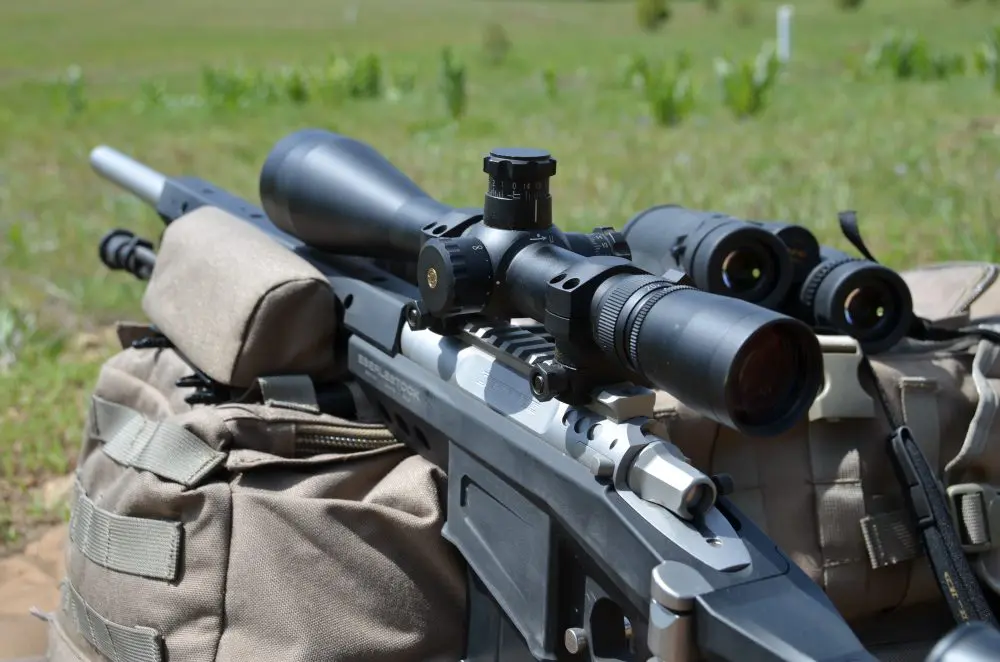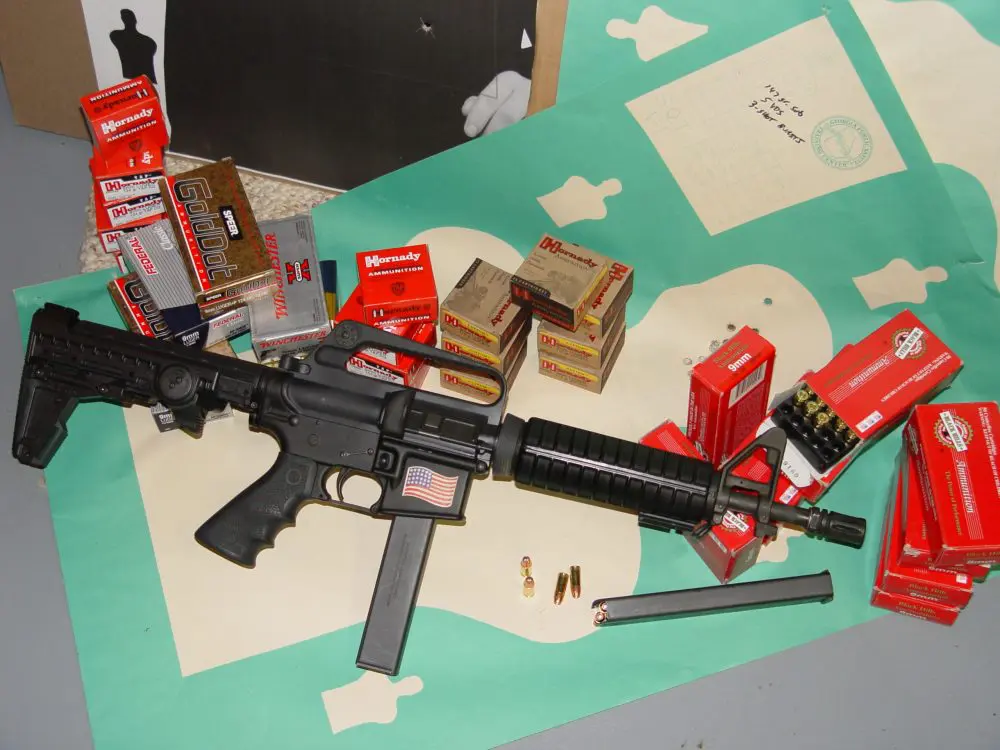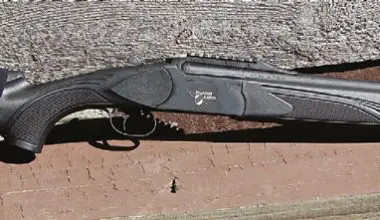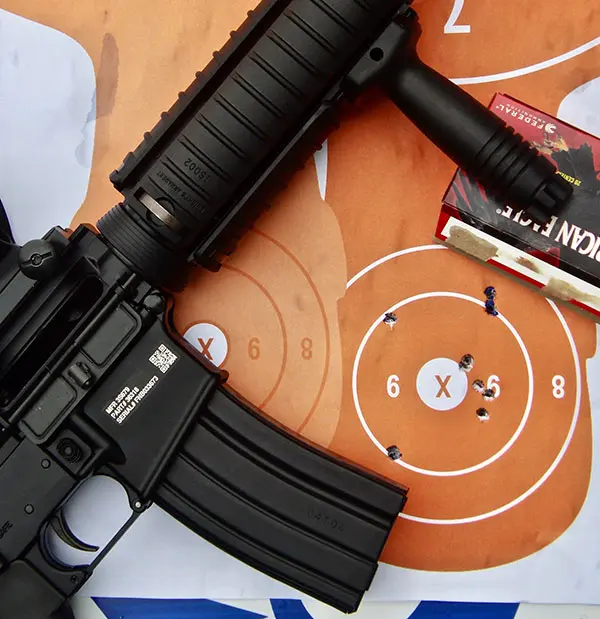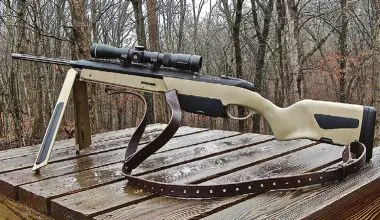A rifle is a very effective combat weapon, but it is not the most portable option. Likewise, at close quarters, shotguns are deadly, but they also are not the most portable weapons. Handguns are portable, but in general not as effective as rifles, carbines, or shotguns.
To make the rifle or carbine more readily transportable, various methods for shortening overall length by folding or collapsing the stock have been developed. Likewise, folding or collapsing stocks have been developed for some shotguns. I will discuss the four main types of collapsible stocks and what I see as their advantages and disadvantages.
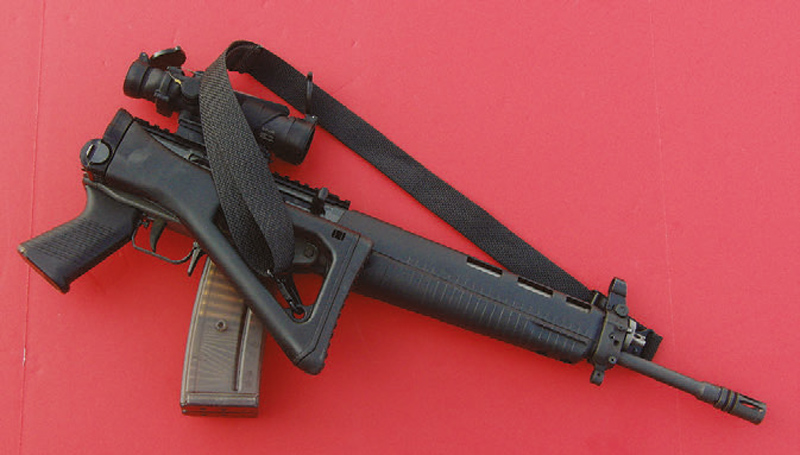
Table of Contents
COLLAPSIBLE STOCKS
Most S.W.A.T. readers are familiar with the collapsible stock on the M4 version of the AR-15 and perhaps on the HK91 or 93 and a few other rifles or carbines. The collapsible stock is normally very quick to deploy or collapse and simple to operate by depressing a conveniently located lever. In the case of the M4 stock, it offers multiple positions to fit shooter size and wearing body armor or heavy clothing. The M4 collapsible stock is acceptable for shooting comfort, though it is not great.
It is much better on a 5.56x45mm platform than a 7.62x51mm one, where its butt pad is often too narrow. Some M4-type stocks are available with a padded butt pad, a useful feature for a 7.62x51mm rifle. An exceptionally good collapsible stock is the one SIG Sauer puts on the 7.62x51mm 716. Because M4 stocks are frequently made of polymer, they are also less expensive if switching from a fixed stock to a collapsible one.
Another “M4” worth noting that uses a collapsible stock is the Benelli M4 shotgun, used by the USMC as the M1014. This collapsible stock is more comfortable than many and works well when firing multiple rounds quickly from the self-loading M4/M1014.
For shooting comfort, the standard HK 91 and HK 93 collapsible stock is terrible. It stows well and looks “high speed” when deployed, but it’s hard to get it seated well against the shoulder and it tends to slide when shooting fast. When shooting a G3 on full auto with the collapsible stock, it is necessary to hold on very tight and muscle the rifle to stay on target.
The similar collapsible stock used on the HK MP5 is nowhere near as good as the MP5 fixed stock, but it isn’t terrible on a 9x19mm weapon.
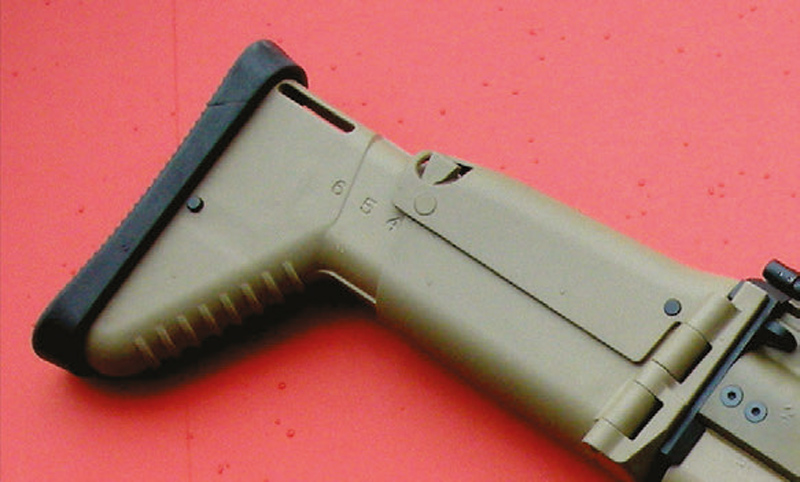
UNDER-FOLDING STOCKS
The under-folding stock is most commonly encountered on variations of the AK-47. I am a fan of AK-47 underfolders for compactness and ease of carry. I like them a lot less for shooting. They also have a tendency to loosen with use, meaning they will be less stable when shooting and more likely to rattle in movement—not good for a combat weapon.
The AK-47 under-folder was designed so it could be fired with the stock folded and carried with a magazine in place. With the stock folded, overall length is about 25.5 inches, which means the carbine will fit in a pack or readily in a vehicle. While it can be fired with the stock folded, accuracy is not good past 10 or 15 yards. But with practice, the stock can be deployed fairly quickly.
I’ve trained close-protection teams armed with folding-stock AKs and got them competent at debussing and bringing the weapon into action quickly in counter-ambush drills.
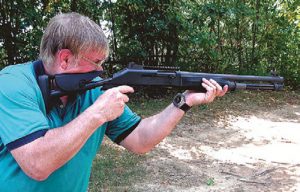
As a trail car usually contains three or four shooters, I normally train them to concentrate on getting out of the vehicle and finding cover before worrying too much about engagement, but I also train them to deploy the stocks and bring the AK into action immediately if crisis engagement is necessary.
Now, for the negative part: I’ve seen really good shooters who could use the folding-stock AK well at 200 yards or more. I’m not one of them. I have trouble getting the stock positioned comfortably and can only get an acceptable cheek weld rather than a good one.
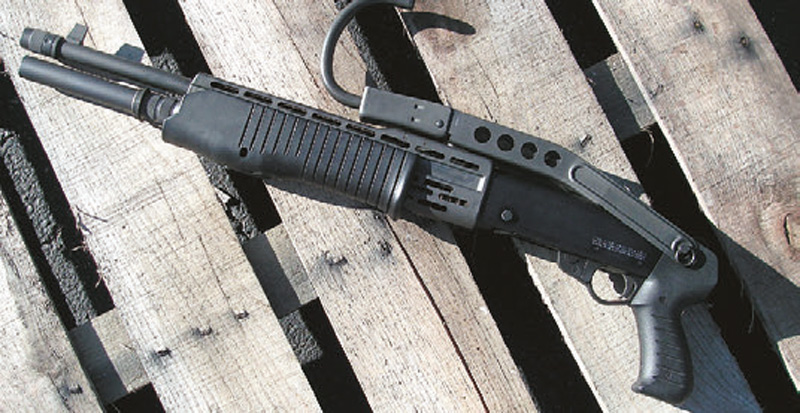
Fortunately, the 7.62x39mm round does not have that much recoil, so the butt plate of the folding stock doesn’t cause great discomfort when shooting. It is noticeable when firing full-auto but not intolerable. In full-auto, the butt plate slips on my shoulder if I don’t grip the carbine really tightly.
When training troops in tropical countries, I have also noticed that the button release and pivot points on the folding-stock AK need to be kept welloiled to prevent rust.
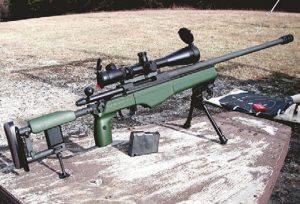
TOP-FOLDING STOCKS
The top-folding stock is most often encountered on shotguns. In many cases, this is so the pump action may be operated with the stock folded.
Like some of you older readers, I’ve used Remington 870s with the factory steel top-folding stock. The pistol grip was a useful feature, and the stock did allow the 870 to conceal fairly well under a topcoat or raincoat.
With practice, the stock could be deployed quickly, or the shotgun tightened against the sling and fired from the hip after clearing the coat. A lot of police street-corner-buy teams used this type of 870.
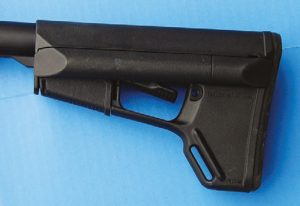
I have a Benelli M3, one of my favorite combat shotguns, with the factory top-folding stock. The problem is that the butt plate does not fold down, resulting in a protrusion that catches when exiting a vehicle or otherwise moving. You don’t see that version of the M3 very often—for good reason!
Then there’s the top-folding Franchi SPAS-12. This is a heavy shotgun and fairly ungainly. But for some reason, it is beloved by filmmakers. I’ve worked with some high-speed police and military units in Europe that like it. It is definitely handier to transport with the stock folded, as it only weighs 8.75 pounds, though it always feels like more to me.
The rather odd hook on the stock was designed to hook over the forearm so the shotgun could be fired one-handed from a vehicle, while carrying out a ship boarding, etc. I have fired one from a vehicle using that technique and it does work. At least the hook can be removed so it does not stick up when the stock is folded along the top of the SPAS-12’s receiver.
SIDE-FOLDING STOCKS
I became a fan of the side-folding stock on the M1A1 carbine. I still like M1A1 carbines, though in retrospect the stock leaves something to be desired. Still, it unfolded and made a usable, if not optimal, stock for shooting.
What really convinced me of the advantages of the side-folding stock was when I first shot the SIG 550, an excellent rifle made even better by the design of its stock. Its side-folder is stable and very comfortable to shoot. As the 550 is a 5.56x45mm rifle, the ability of the stock to handle recoil is not an issue. It is just a great stock for shooting.
For use with some optical sights, the SIG 550 series of rifles is best used with a cheek piece made by SIG to allow a solid cheek weld. I use an ACOG on the Sig Sauer 551 and find it works best with the cheek piece. On my 551A1, the standard stock lets me acquire a scope just fine.
I think the best example of how well the folding stock can work for precision shooting is the number of long-range sniping rifles that are equipped with folders. To name just a few, the Sako TRG 42, Steyr SSG 08, and Accuracy International AWM rifles in .338 Lapua use a side-folding stock and are still capable of ½ MOA accuracy at long range. The stocks are fully adjustable and comfortable to shoot as well.
I also chose a side-folding stock when I had ROBAR build me a compact counter-sniping rifle built on the Remington 700. Designed to offer countersniper capability in a rifle that can easily be carried in a pack or case, my ROBAR QR-2F has a 16.25-inch barrel and folding stock, yet still shoots sub- MOA groups at 300 yards.
Other weapons I’ve used that have really good side-folding stocks include the FN SCAR and Poly Tech side-folding version of the AK-47, though the latter still uses a skeleton stock, but a better one than a standard AK folder. The Magpul Zhukov-S Stock is a great folding stock for the modern AK. The Zhukov- S Stock offers a folding collapsible stock with QD sling mounts, modular cheek risers, and shock-absorbing rubber butt pad.
I use a simple system for evaluating a folding or collapsible stock on a rifle or carbine. First, I want it to make the weapon more compact when I’m carrying it. But second, and equally important, I want the stock to allow me to shoot the rifle, carbine, SMG, or shotgun as effectively as possible.
Sometimes there’s a tradeoff and I accept that, but the stock must allow you to be able to quickly engage your target and hit.
